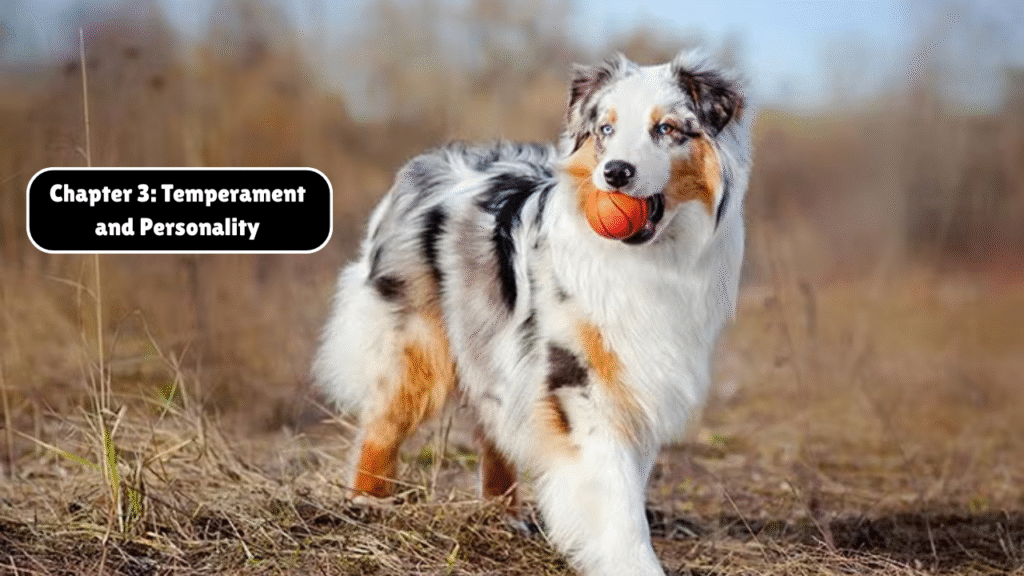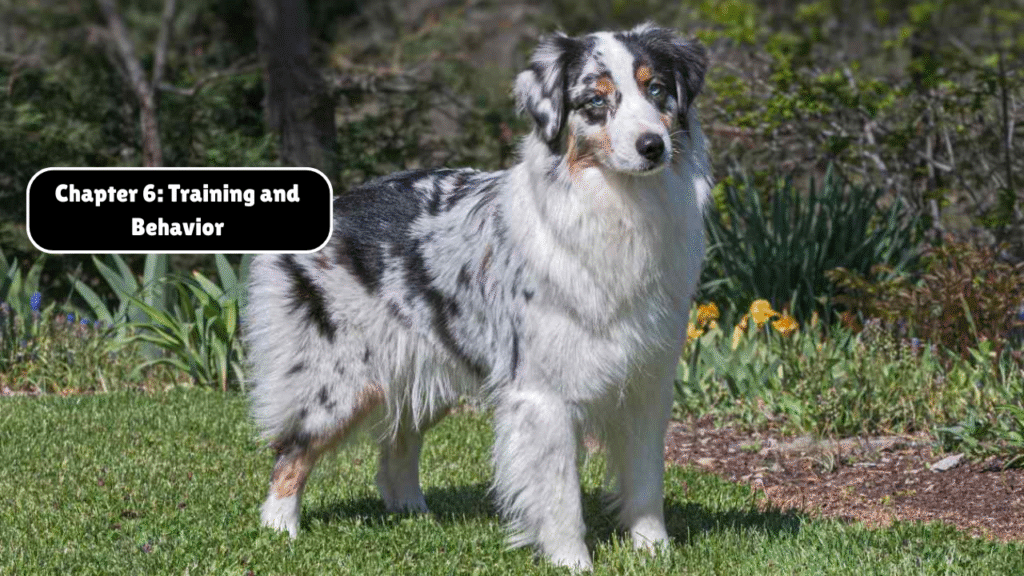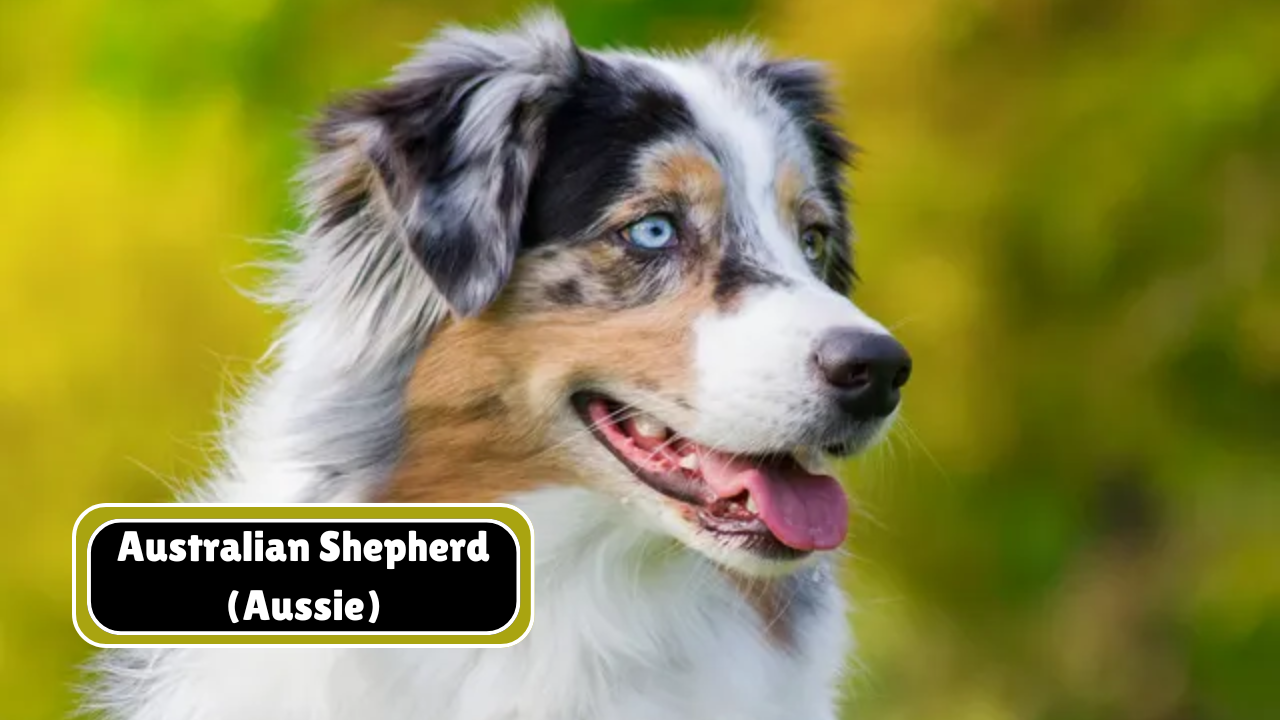Introduction
With their sparkling eyes, boundless energy, and keen intelligence, Australian Shepherds (affectionately known as Aussies) are one of the most captivating dog breeds around. Despite the name, these loyal companions were not developed in Australia but in the United States. Originally bred to herd livestock, the Aussie is a working dog through and through—hardworking, loyal, and incredibly smart.
Whether you’re a seasoned dog owner or looking for your first four-legged friend, understanding the breed’s temperament, needs, and quirks is key. This in-depth article covers everything you need to know about the Australian Shepherd: their history, behavior, care needs, and why they’re such a beloved breed.
Chapter 1: Origins and History
Misleading Name
Though their name suggests an Australian origin, Australian Shepherds were actually developed in the American West during the 19th century. They are believed to have descended from a line of European herding dogs that arrived in the United States via Australia with Basque shepherds. American ranchers noticed their talents and began breeding them for herding and working capabilities.
Role in Ranch Life
Aussies became a staple of cowboy culture in the western U.S., especially during the post–World War II rodeo boom. Their herding skills, agility, and loyalty made them stars of ranches, farms, and rodeo arenas alike. The breed was officially recognized by the American Kennel Club (AKC) in 1993.
Chapter 2: Physical Characteristics
General Appearance
Australian Shepherds are medium-sized dogs with a strong, athletic build. They’re agile and muscular, built to work long hours on farms and in rugged terrain.
- Height: Males: 20–23 inches | Females: 18–21 inches
- Weight: Males: 50–65 lbs | Females: 40–55 lbs
- Lifespan: 12–15 years
- Coat: Medium-length, weather-resistant double coat
- Tail: Naturally bobbed or docked (some are born with bobtails)
Coat Colors
Aussies come in a stunning array of colors, including:
- Blue Merle
- Red Merle
- Black
- Red (liver)
- All may include white markings and tan points
Eye Colors
One of their most striking features is their eyes, which can be brown, blue, amber, or even two different colors (heterochromia).

Chapter 3: Temperament and Personality
Energetic and Hardworking
The Aussie thrives on activity and purpose. Originally bred to herd sheep and cattle, these dogs have energy to burn and love having a job.
Intelligent and Trainable
They rank among the top most intelligent dog breeds. Aussies learn commands quickly, respond well to positive reinforcement, and excel in obedience, agility, and herding sports.
Loyal and Protective
Aussies are fiercely loyal to their families and often develop a strong bond with one person. They can be aloof with strangers, making them excellent watchdogs.
Sociable but Reserved
Early socialization is essential. While they aren’t typically aggressive, they may be wary of unfamiliar people or pets unless properly introduced.
Chapter 4: Health and Lifespan
Common Health Concerns
Though generally healthy, Australian Shepherds are prone to several genetic conditions, particularly without responsible breeding.
- Hip Dysplasia: Malformation of the hip joint
- Elbow Dysplasia: Affects mobility and can cause arthritis
- Progressive Retinal Atrophy (PRA): Gradual vision loss
- Epilepsy: Some lines have a genetic predisposition
- Multidrug Sensitivity (MDR1 gene): Can make them sensitive to certain medications
- Cataracts and Collie Eye Anomaly (CEA): Eye disorders
Regular Health Maintenance
- Routine vet checkups
- Annual eye exams
- Joint and bone health monitoring
- Genetic testing, especially for breeding dogs
Chapter 5: Grooming and Maintenance
Coat Care
Despite their double coat, Aussies are relatively easy to groom:
- Brushing: 2–3 times per week to prevent mats and reduce shedding
- Bathing: Once every 6–8 weeks, or as needed
- Seasonal Shedding: Heavy twice a year (“blowing coat”)
- Trimming: Occasional trimming of the paws and sanitary areas
Additional Grooming Needs
- Nail Clipping: Every 3–4 weeks
- Ear Cleaning: Weekly to prevent infection
- Dental Hygiene: Brush teeth several times a week

Chapter 6: Training and Behavior
Early Training is Critical
Aussies are eager to please but can become stubborn or destructive if bored or untrained.
- Start Young: Begin obedience training as early as 8 weeks
- Consistency: Use positive reinforcement and stay patient
- Challenge Their Mind: Puzzle toys and advanced tricks work well
Behavioral Quirks
- May “herd” people or other pets by nipping at heels
- Highly alert and may bark at unusual sounds
- Thrive on routine—dislike unpredictability or being left alone
Chapter 7: Exercise and Activity Needs
Daily Physical Exercise
Australian Shepherds need at least 1–2 hours of vigorous exercise per day. Without adequate physical and mental stimulation, they can become anxious and destructive.
Best Activities for Aussies
- Long walks or runs
- Hiking and trail running
- Agility training
- Herding competitions
- Obedience trials
- Frisbee and fetch games
- Swimming
Apartment Living?
While they can adapt to apartment life, it’s not ideal. Aussies do best in homes with large yards or open access to nature. Without a job or space, they can develop behavioral issues.
Chapter 8: Nutrition and Diet
Feeding Guidelines
- Puppies: 3–4 small meals per day
- Adults: 2 balanced meals daily
- Seniors: Adjust based on activity and metabolism
Dietary Needs
- High-protein, low-grain foods
- Omega-3 fatty acids for coat and joint health
- Limited fillers and artificial preservatives
- Fresh water always available
Obesity can shorten an Aussie’s lifespan and lead to joint problems, so portion control is essential.
Chapter 9: Living with an Australian Shepherd
Family Compatibility
Aussies are exceptional family dogs when properly socialized. They’re gentle with children, especially those they’ve grown up with, and protective of their human pack.
Other Pets
They usually get along with other dogs and animals, especially if introduced early. However, their strong herding instinct may lead them to chase or control smaller pets.
Travel and Adventures
Their love for activity and close bonds with humans make Aussies great travel companions. Many love road trips, camping, and hiking—just ensure they’re leashed in unfamiliar areas.
Chapter 10: Working and Service Roles
Herding
Unsurprisingly, herding remains the Aussie’s strongest skill. They’re capable of managing sheep, cattle, and even ducks or geese with minimal instruction.
Service and Therapy
Thanks to their intelligence and empathy, Aussies also excel as:
- Search-and-rescue dogs
- Therapy and emotional support animals
- Guide dogs (although their energy level can be too high for some roles)
Competitions
They dominate in agility, flyball, rally, disc dog, obedience, and dock diving events. These are great ways to keep an Aussie physically fit and mentally challenged.
Chapter 11: Choosing an Australian Shepherd
Adoption vs. Breeding
- Adoption: Many purebreds and mixes are available through shelters and breed-specific rescues
- Reputable Breeders: Should provide health testing, socialization, and transparency about genetic risks
Red Flags When Buying
- Breeders who won’t show you the facilities
- No health guarantees or records
- Puppies sold under 8 weeks old
- “Mini Aussies” from unknown backgrounds (often different breed mixes)
Costs
- Puppy from breeder: $800–$2,500
- Adoption: $150–$400
- Annual upkeep: $1,000–$2,000 (food, grooming, vet, toys, insurance)
Conclusion
The Australian Shepherd is not a dog for the faint of heart—but for the right owner, they are unmatched companions. Their intelligence, loyalty, and work ethic are legendary. Aussies need purpose, stimulation, and love. They’re best suited for active individuals or families who can meet their high energy and training needs. If you’re willing to put in the time, training, and love, an Aussie will give you their whole heart—and probably try to herd it, too.
FAQs
1. Are Australian Shepherds good for first-time dog owners?
They can be—but only for active, committed owners who are ready to invest time in training and exercise. Their intelligence can be overwhelming for new pet parents without preparation.
2. Do Australian Shepherds bark a lot?
Aussies are vocal and will bark to alert you of strangers, boredom, or excitement. Early training can help manage excessive barking.
3. Can Australian Shepherds live in apartments?
They can, but it’s not ideal. If you’re in an apartment, be prepared to exercise them multiple times a day and engage them with mental activities indoors.
4. How often should I groom my Australian Shepherd?
Brush them at least 2–3 times a week, with more frequent grooming during shedding seasons. Regular nail trims and ear cleaning are also important.
5. Are Australian Shepherds aggressive?
No, they’re not naturally aggressive. However, their herding instinct may cause them to nip or chase. Proper socialization and training can manage these behaviors.



